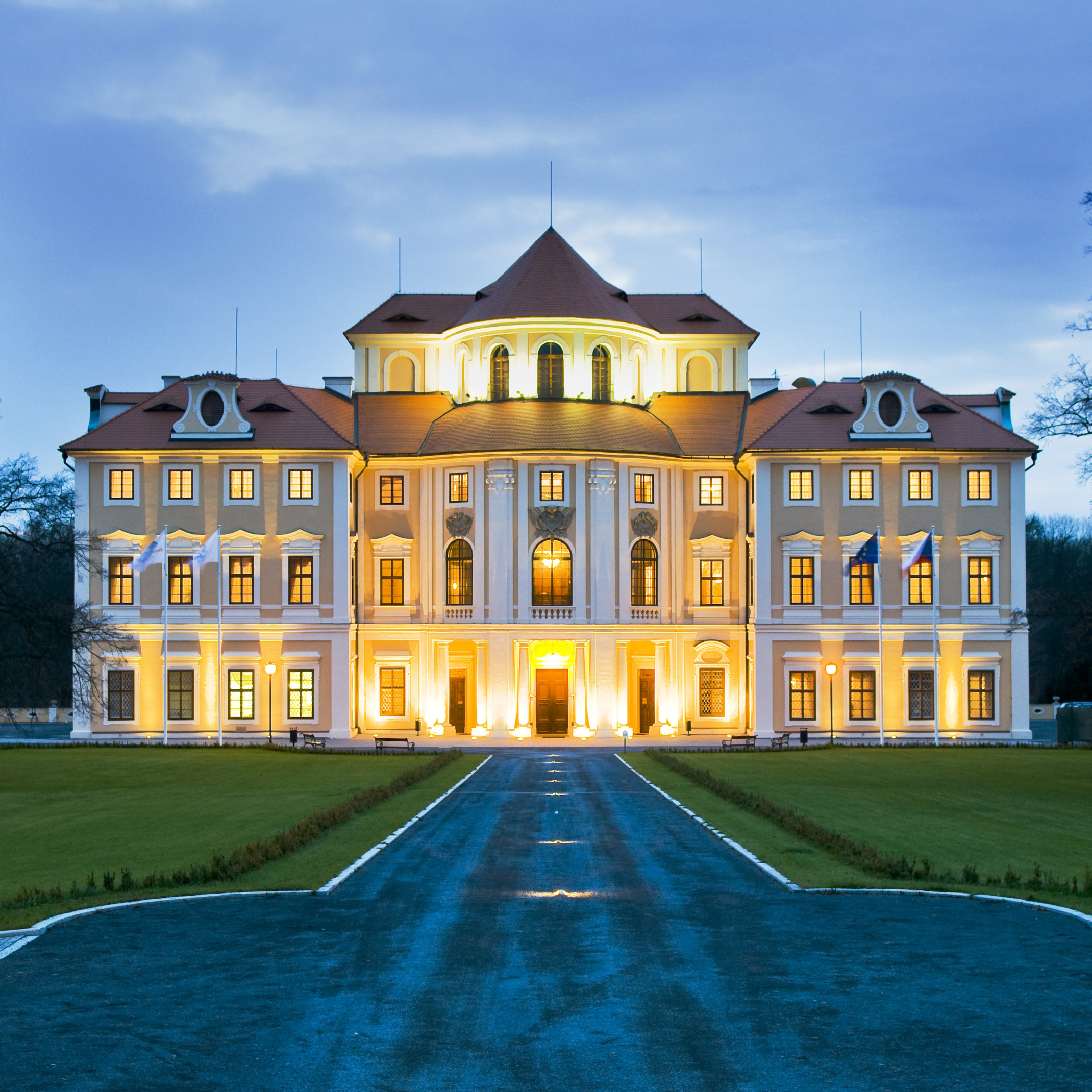
While global poverty is declining faster than ever before, the distribution of wealth around the world is far from even. North America is home to less than 5% of the global population and accounts for about 27% of the world’s gross domestic product. Meanwhile, South Asia is home to 24% of the world population and accounts for less than 4% of global GDP.
While gross domestic product provides an accurate picture of the size of a nation’s economy, gross national income, or GNI, is a more precise measure of the financial well-being of a country’s citizens. GNI includes GDP as well as the net income generated by a country’s residents earned outside of national borders. If an entrepreneur from France owns a factory in Germany, for example, the factory’s profits would be included in France’s GNI, but not its GDP. Similarly, profits of foreign-owned companies within France would be excluded from the French GNI.
To identify the richest countries in the world, 24/7 Wall St. reviewed GNI per capita for 131 countries and special administrative regions with data from the World Bank.
Click here to see the full list of the 25 richest countries in the world.
Click here to see our detailed findings and methodology.
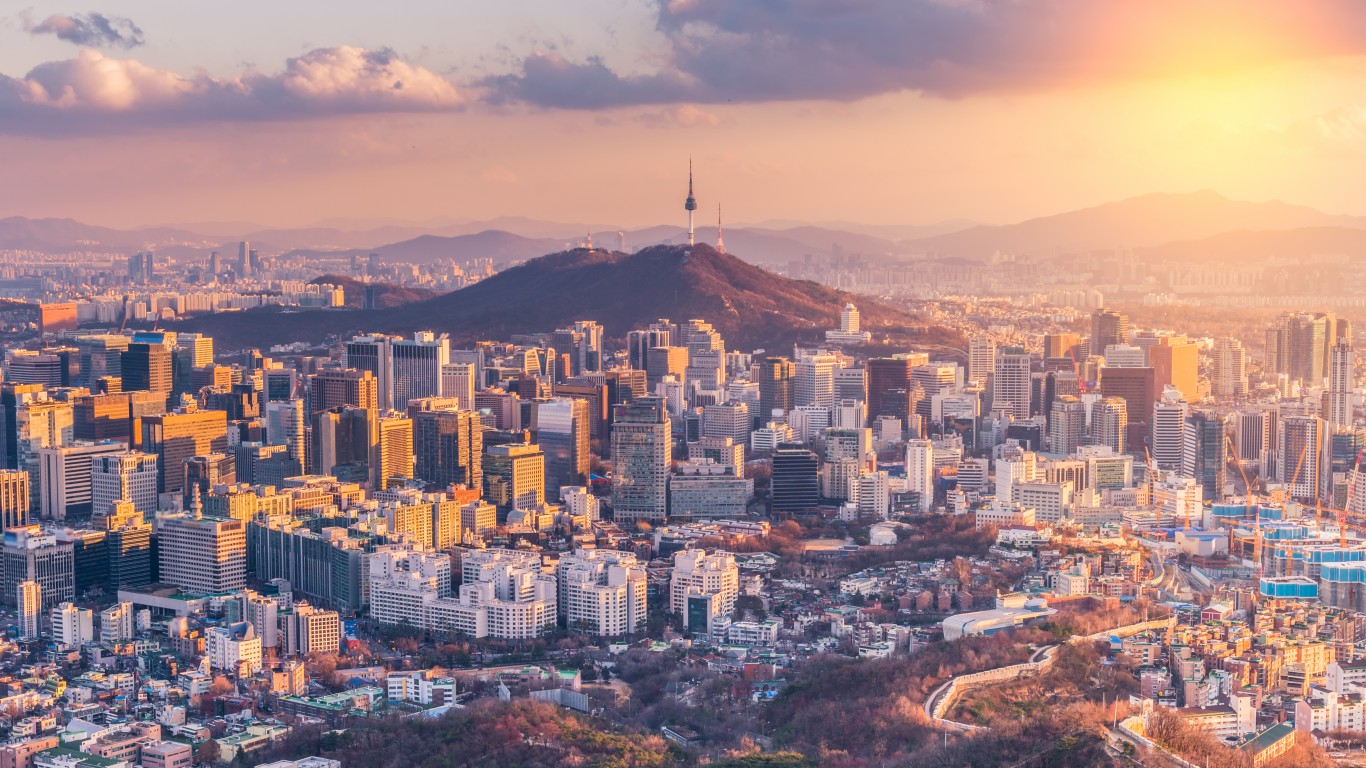
25. South Korea
> GNI per capita: $34,277
> 2016 GDP: $2.7 trillion
> Population: 65.6 million
> Life expectancy: 81.0 years at birth
One of the poorest countries in the mid-20th century, South Korea has experienced rapid economic growth since the Korean War ended and is now one of the wealthiest countries in the world. The country, lacking significant natural resources, was successful in implementing an export-oriented economic development plan, which included heavy spending on education and investment in industrial facilities. In what analysts describe as the “Miracle on the Han River,” South Korea’s GNI per capita increased more than tenfold between 1970 and 2016 and is now $34,277 — more than twice the global average GNI per capita of $14,459. Exports today account for 42.2% of the country’s GDP, far more than the 28.6% average across all countries. South Korea is home to 15 of the world’s 500 largest companies by revenue, among them Samsung Electronics and Hyundai Motor, and its top exports are consumer electronics and cars.
[in-text-ad]

24. United Kingdom
> GNI per capita: $38,680
> 2016 GDP: $2.7 trillion
> Population: 65.6 million
> Life expectancy: 81.0 years at birth
Arguably the leading world power at the beginning of the 20th century, the United Kingdom has taken on a smaller economic role in the last century following two world wars and the decolonization of its larger overseas territories. Like most OECD nations, the U.K. economy is highly globalized and is largely dependent on the services sector. Finance, aerospace engineering, and pharmaceutical manufacturing play major roles in the economy. Today, the U.K.’s GNI per capita of $38,680 is roughly in line with the average of $38,992 for OECD nations and is one of the highest of any country.
Spending cuts to the U.K.’s welfare, government services, and military in the wake of the 2008 financial crisis have prompted unrest in the country about Britain’s role in global affairs. In June 2016, Britain held a referendum that resulted in a vote to leave the European Union. Britain is expected to leave the EU by May 2019, even as many experts project the action may have negative consequences for the country’s economy in the long run.
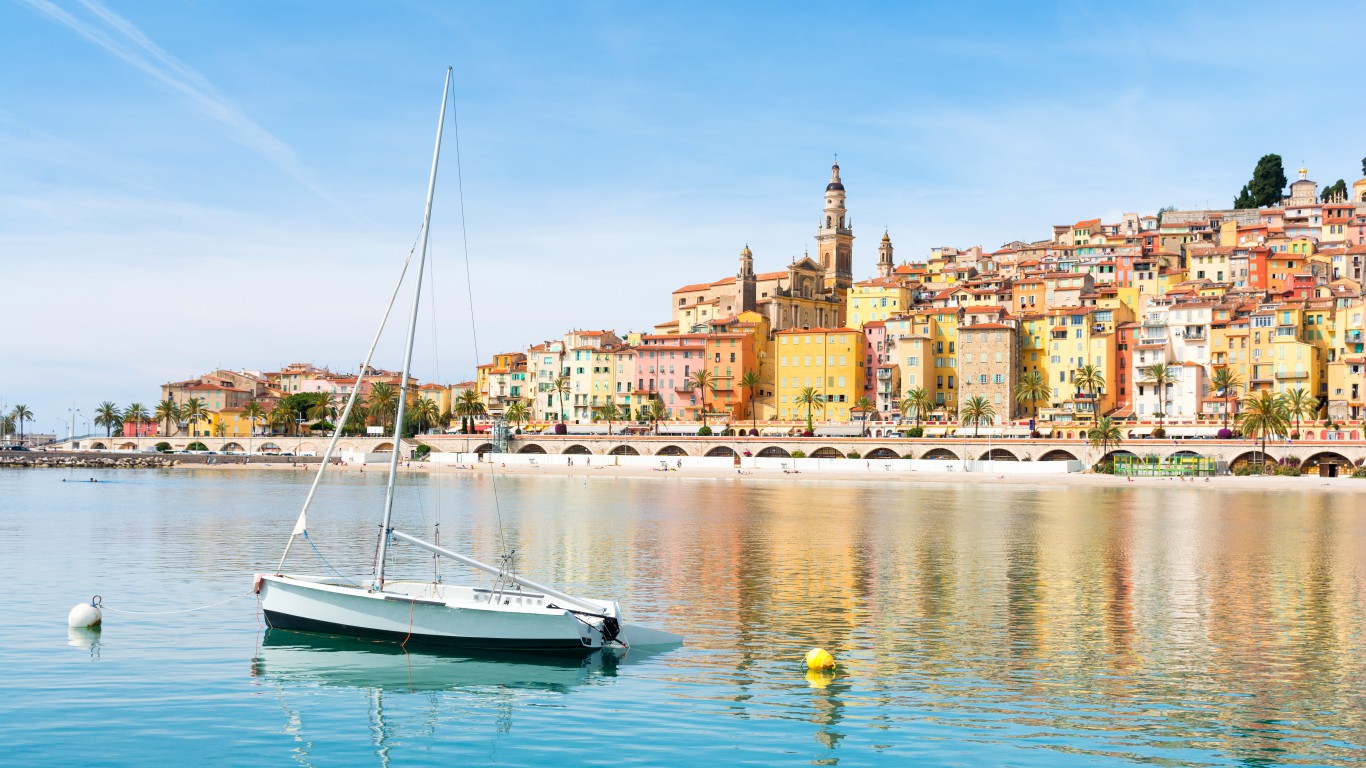
23. France
> GNI per capita: $38,680
> 2016 GDP: $2.5 trillion
> Population: 66.9 million
> Life expectancy: 82.3 years at birth
While France’s economy struggled somewhat during the 20th century as the result of two world wars and the decline of its colonial empire, today it is the world’s sixth largest economy by GDP. France is largely known for its cuisine, fashion, and language around the world, and is the most visited country on the globe. Tourism comprises a major part of the nation’s economy, as do its chemical manufacturing, technology, and energy industries. France’s GNI per capita of $38,680 is more than twice the global average of $15,067 and is roughly in line with the OECD average of $38,992.
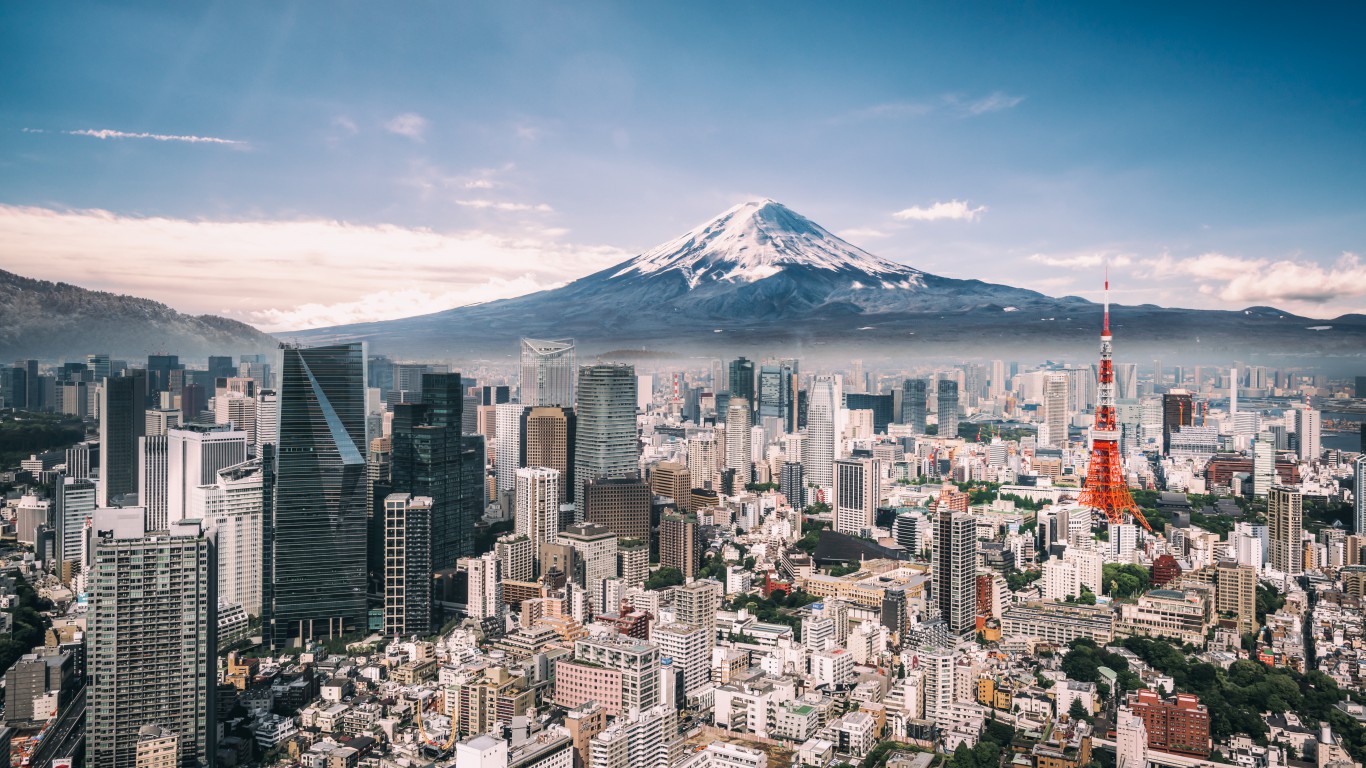
22. Japan
> GNI per capita: $39,526
> 2016 GDP: $4.9 trillion
> Population: 127.0 million
> Life expectancy: 84.0 years at birth
Following World War II, Japan underwent a period of rapid economic expansion that has largely led to the high incomes many of its citizens enjoy today. Economic growth was fueled in part by the country’s highly successful car and consumer electronics manufacturing industries. Today Japan has a GNI per capita of $39,526.
Japan’s economic growth over the past half-century has led to a marked improvement in the country’s quality of life and public health. The current life expectancy at birth in Japan is 84.0 years, nearly the most of any nation.
[in-text-ad-2]
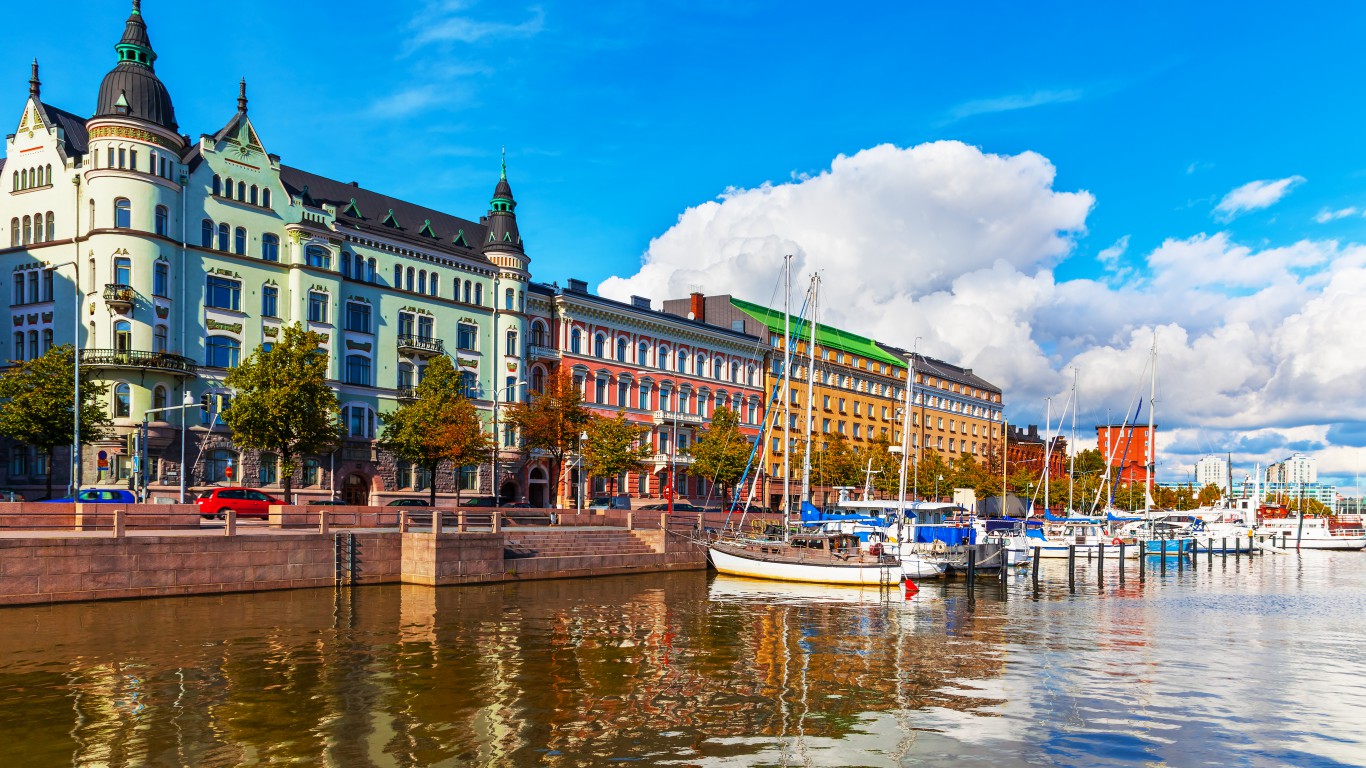
21. Finland
> GNI per capita: $39,977
> 2016 GDP: $238.7 billion
> Population: 5.5 million
> Life expectancy: 81.8 years at birth
While Finland’s population of 5.5 million is smaller than that of most countries, its $238.7 billion economy ranks among the world’s largest. Finland’s GNI per capita of $39,977 is greater than the OECD average of $38,992 and the 21st highest of any nation.
Finland joined the European Union in 1995, and fully adopted the euro as its currency in 2002. Like other Nordic countries, Finland relies heavily on international trade. Finland’s largest exports include manufactured electronics, paper goods, medical products, metals, and refined petroleum, and its largest international markets are Germany, Sweden, and the United States.
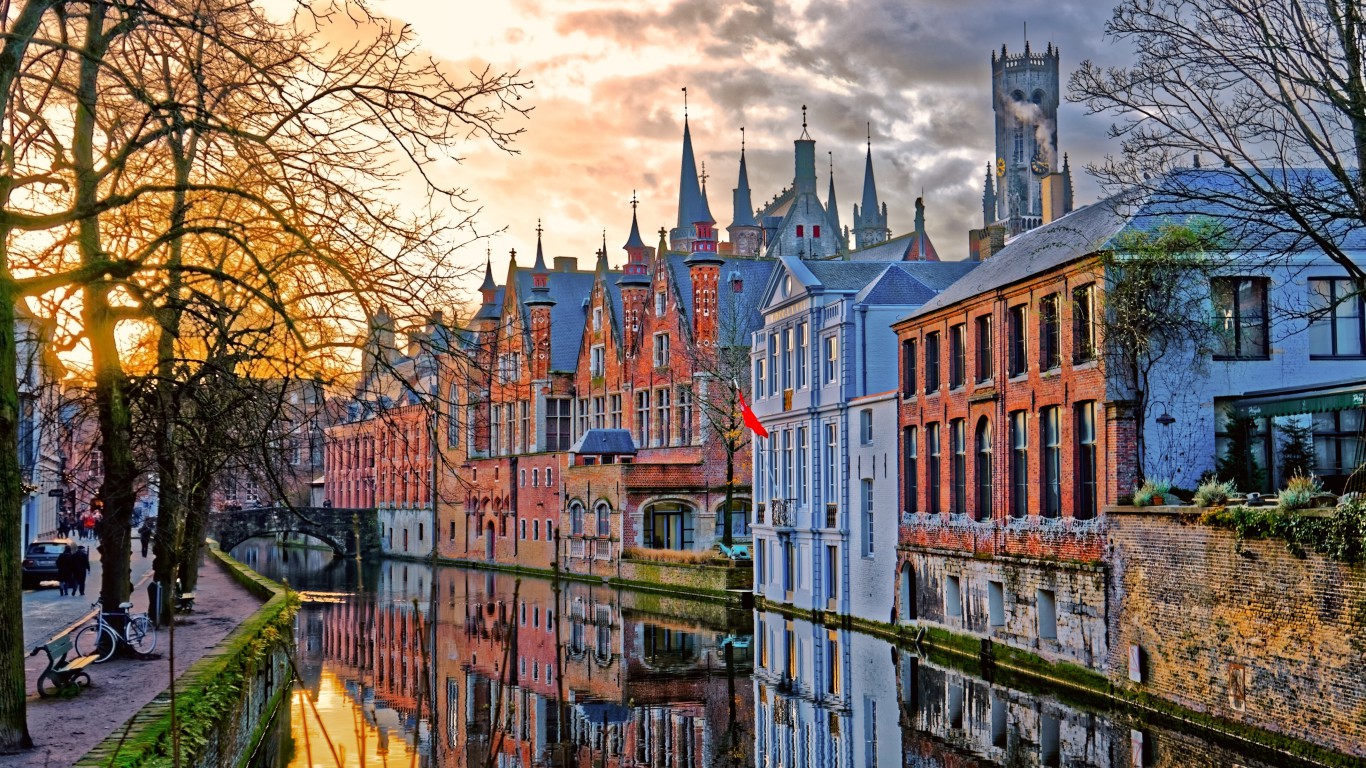
20. Belgium
> GNI per capita: $42,368
> 2016 GDP: $468.0 billion
> Population: 11.3 million
> Life expectancy: 81.0 years at birth
Situated along the border of France to the southwest, Luxembourg to the southeast, Germany to the east, and the Netherlands to the northeast, Belgium has leveraged its advantageous location into a prosperous trade economy. Exports account for 82.9% of Belgium’s total GDP, the 10th largest share of any nation. Trade is facilitated by the country’s extensive transportation infrastructure, which consists of the second largest sea port in Europe, a network of roadways connecting to neighboring countries, and one of the densest rail systems in the world.
Belgium’s top exports include chemical products, cars, diamonds, and refined petroleum, and its largest trading partners are Germany, France, the Netherlands, and the United Kingdom. Belgium’s GNI per capita of $42,368 is the 20th highest of any country.
[in-text-ad]

19. Canada
> GNI per capita: $42,690
> 2016 GDP: $1.5 trillion
> Population: 36.3 million
> Life expectancy: 82.3 years at birth
A relatively sparsely populated country, Canada has the 45th largest population in the world and the largest landmass of any nation other than Russia. Despite its low population density, Canada is a major economic power and has the 13th largest GDP on the globe. Canada’s economic system is similar to that of the United States in its market-oriented, services-dominated focus and high standard of living. Canada’s GNI per capita of $42,690 is over $11,000 less than the U.S. GNI per capita.
While a large majority of the Canadian workforce is employed in the service sector, Canada’s vast oil reserves and other natural resources play important roles in the country’s economy. Some of Canada’s largest exports include petroleum, gold, and sawn wood. The United States is the destination for 76% of Canada’s total export value and 53% of its total imports.

18. Australia
> GNI per capita: $43,442
> 2016 GDP: $1.2 trillion
> Population: 24.2 million
> Life expectancy: 82.5 years at birth
Australia’s GNI per capita of $43,442 is greater than the OECD average of $38,992 and about three times the global average of $14,459. Australia has a highly developed, mixed economy, which is the 14th largest in the world by GDP. Australia’s economy is dominated by the service sector, in particular the financial and insurance services industries. Mining and agriculture are also important to the country’s export activity.
A high GNI per capita likely contributes to positive health outcomes in Australia. The average life expectancy at birth in the country is 82.5 years, 10 years longer than the global average.

17. Austria
> GNI per capita: $44,470
> 2016 GDP: $390.8 billion
> Population: 8.7 million
> Life expectancy: 80.9 years at birth
A highly developed, service-oriented economy, Austria has one of the highest standards of living in the world. The country’s GNI per capita of $44,470 is greater than the OECD average of $38,992 and about three times the $14,459 global figure. Tourism is also highly important to the nation’s economy. Tourists spent an estimated 40 billion euros in the country in 2016 alone.
Austria has a strong trade economy, with exports accounting for 52.3% of the national GDP — nearly twice the 27.9% OECD average. Since joining the European Union in 1995, Austria has benefitted from a wider range of trading partners. Austria’s major exports include medical products, vehicle parts, cars, and broadcasting equipment.
[in-text-ad-2]
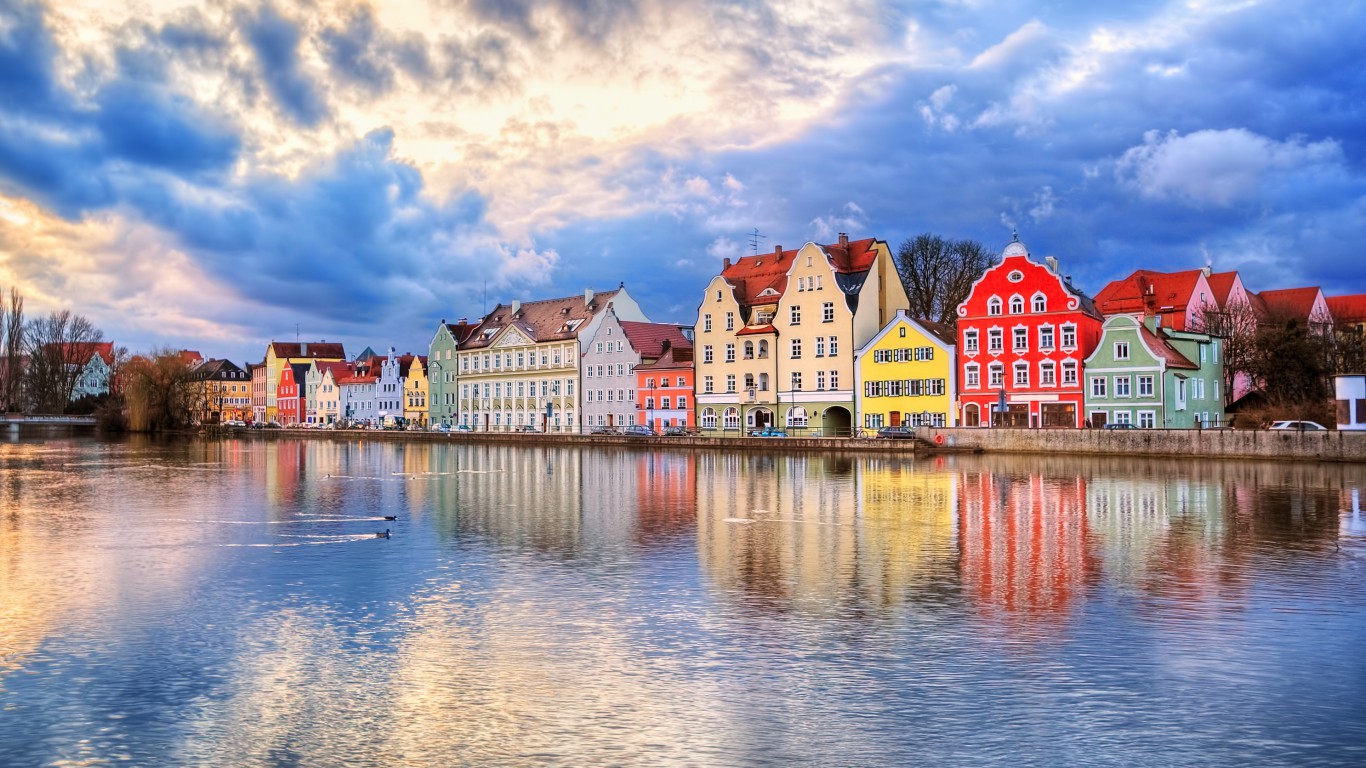
16. Germany
> GNI per capita: $45,127
> 2016 GDP: $3.5 trillion
> Population: 82.5 million
> Life expectancy: 80.6 years at birth
With a GDP of $3.5 trillion, Germany is the largest economy in Europe and one of the largest in the world. Like other highly developed, service-oriented social market economies, Germany has one of the highest standards of living in the world. The country’s GNI per capita of $45,127 is greater than the OECD average of $38,992 and more than three times the $14,459 global average.
Exports also play an important role in the German economy, accounting for 46.1% of national output — far more than the 28.6% average for all countries. Germany is home to some of the world’s largest automobile manufacturers, such as Daimler, Volkswagen, and BMW, and cars and vehicle parts account for 14.2% of the country’s total export value. Other major exports include chemical products, mechanical equipment, and minerals.
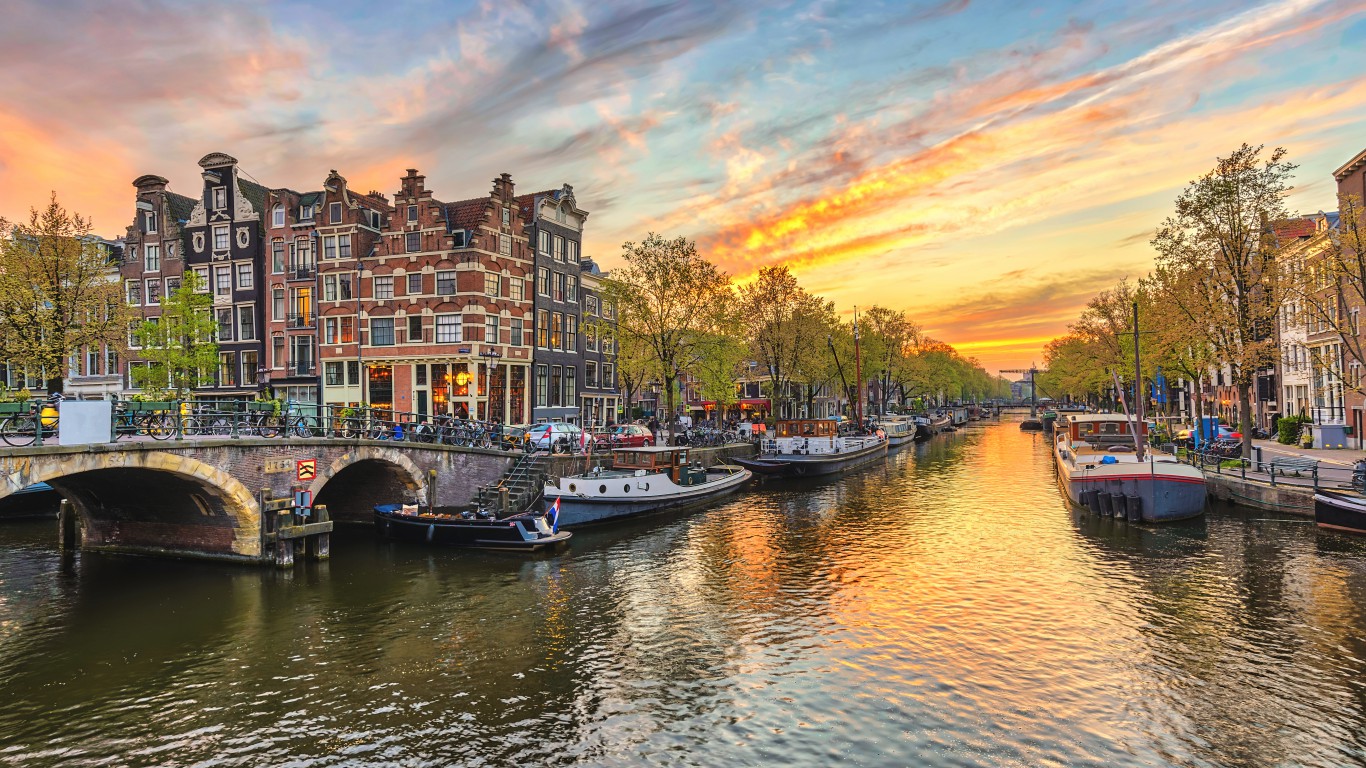
15. Netherlands
> GNI per capita: $46,712
> 2016 GDP: $777.2 billion
> Population: 17.0 million
> Life expectancy: 81.5 years at birth
The Netherlands does not rank among the top 50 in the world in population, but the country’s $777.2 billion GDP is 18th largest. Dutch citizens enjoy one of the highest standards of living in the world and have access to one of the most comprehensive social security systems of any country. The Dutch GNI per capita of $46,712 is more than three times the $14,459 global average and approximately $7,000 less than the U.S. figure.
Spearheaded by the establishment of trade routes between Asia and Europe by the Dutch East India Trading Company throughout the 17th and 18th centuries, exports still play a major role in the economy of the Netherlands today. Exports account for 82.4% of the country’s total economic output, the 10th largest share of any country. Since the country discovered its vast natural gas resources in 1959, the energy sector has grown to become a major source of the nation’s commercial activity and state revenue. Oil and gas products account for 10.5% of the country’s total export value. Other top exports include agricultural products, computers, phones, and other mechanical equipment.
[in-text-ad]
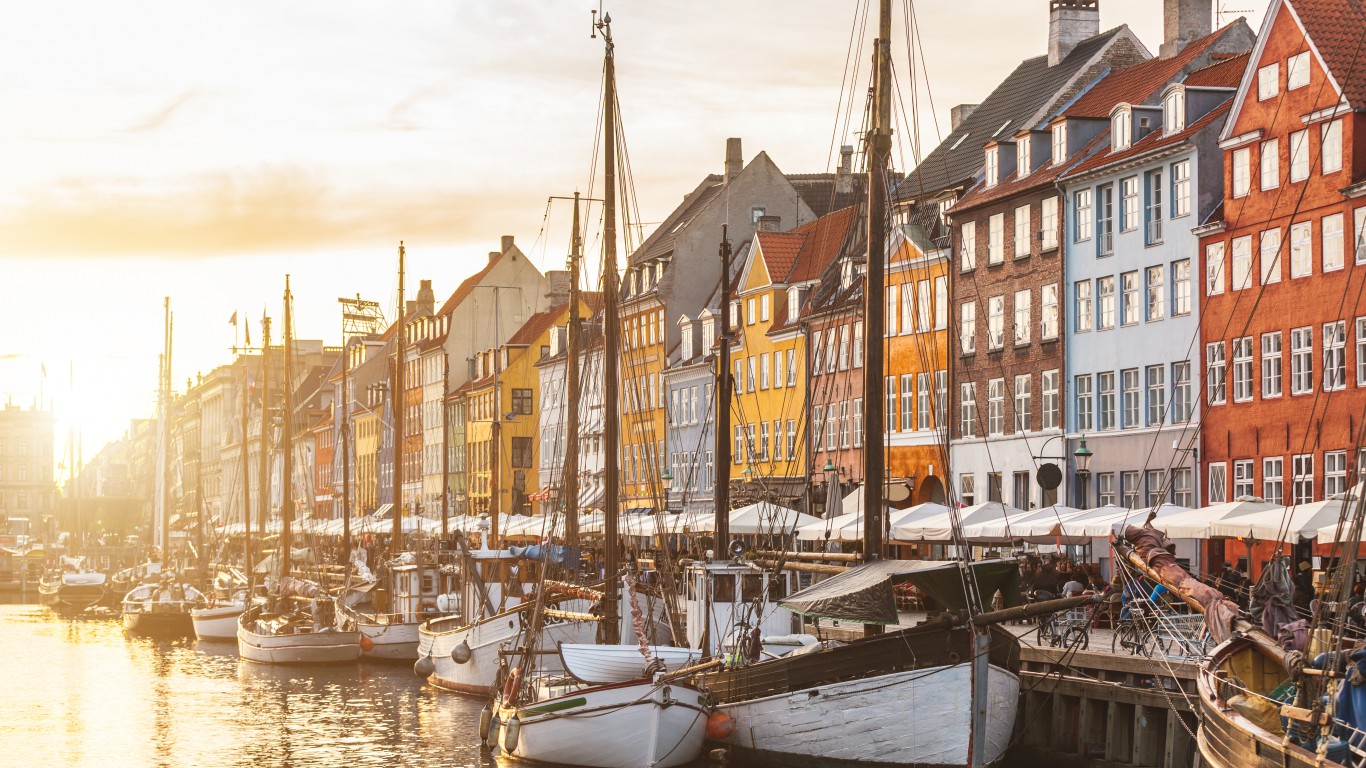
14. Denmark
> GNI per capita: $47,160
> 2016 GDP: $306.9 billion
> Population: 5.7 million
> Life expectancy: 80.7 years at birth
According to corruption watchdog Transparency International, public trust in government is higher in Denmark than in nearly any other country, trailing only New Zealand. Strong faith in public institutions has created the conditions for a diverse, trade-based economy. Denmark’s exports accounted for 53.6% of total economic output in 2016, nearly twice the 27.9% OECD average. Medicine, computers, and furniture are some of the country’s major exports. Denmark also exported billions of dollars worth of electric generating sets, pigs, and cheese. Denmark has a GNI per capita of $47,160, well above the $14,459 global average.
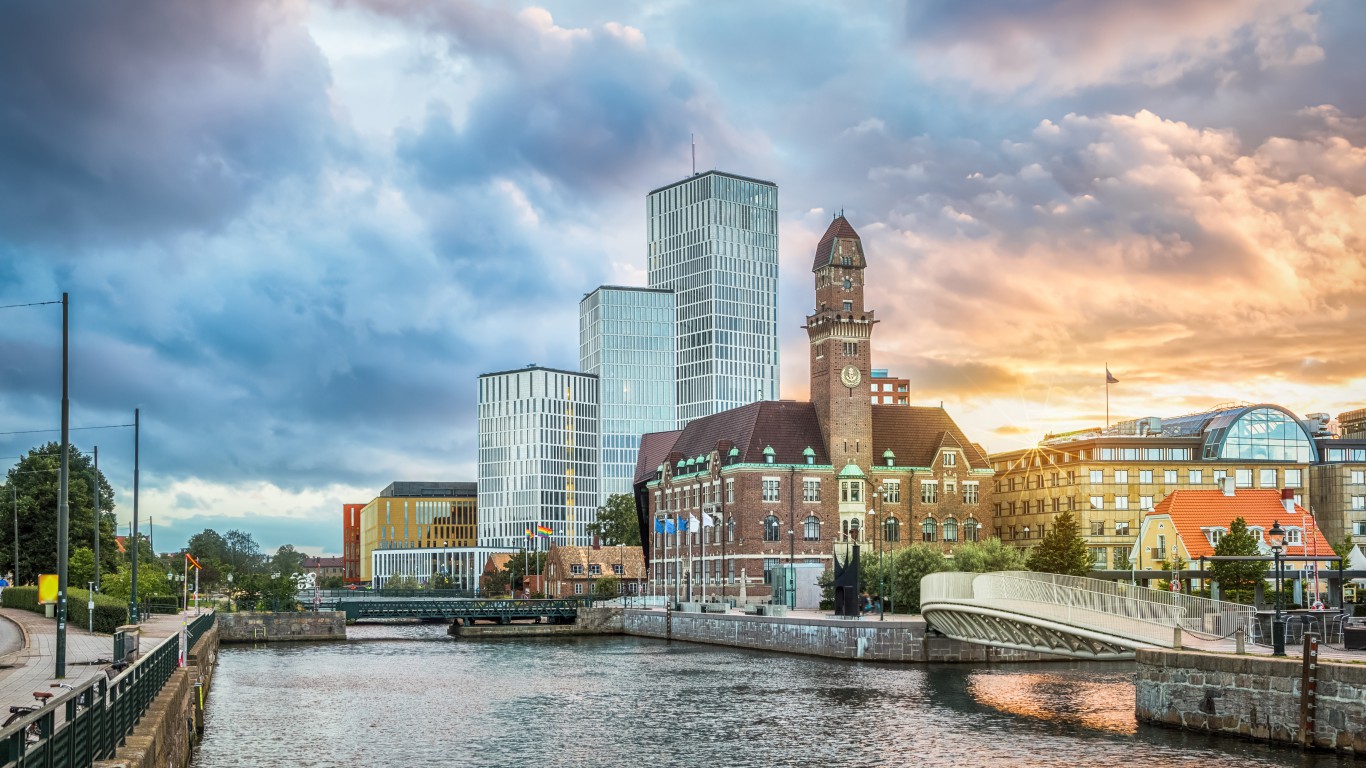
13. Sweden
> GNI per capita: $47,311
> 2016 GDP: $514.5 billion
> Population: 9.9 million
> Life expectancy: 82.2 years at birth
Sweden has a GNI per capita of $47,311, far greater than the $38,992 OECD average and more than three times the $14,459 global figure. High quality of life in Sweden is made possible in part by open-market policies that promote free trade, effective regulation in the banking sector, and a generous social welfare program.
The high GNI per capita has likely contributed to Sweden’s positive health outcomes. Life expectancy at birth in Sweden is 82.2 years, 3.5 years longer than the U.S. life expectancy of 78.7 years.
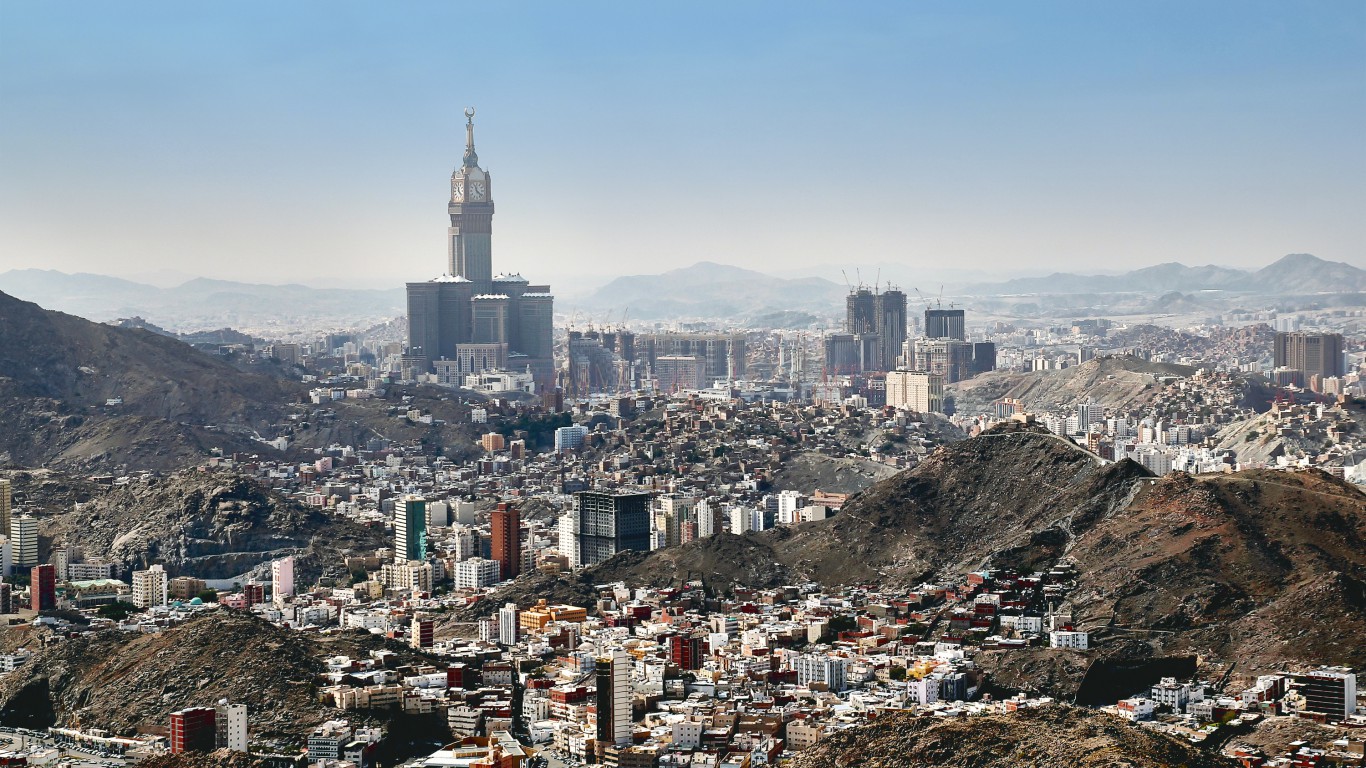
12. Saudi Arabia
> GNI per capita: $51,383
> 2016 GDP: $646.4 billion
> Population: 32.3 million
> Life expectancy: 74.6 years at birth
Saudi Arabia is home to the second largest proven petroleum reserves and fifth largest proven natural gas reserves in the world. The largest producer and exporter of petroleum, Saudi Arabia is highly dependent on its oil industry. Oil alone accounts for 26.4% of Saudi Arabia’s $646.6 billion GDP, the largest share of any country other than Iraq and Kuwait.
While Saudi Arabia’s vast oil reserves are the primary reason for its high GNI per capita of $51,383 — the second highest in the Arab world and the 12th highest globally — the nation’s wealth does not translate to a high standard of living for many of its residents. Most of the oil reserves and factors of oil production are owned by the national oil company Saudi Aramco, and a majority of oil revenues are controlled by the country’s royal family. While countries with higher economic output per capita tend to have better health outcomes overall, the life expectancy at birth in Saudi Arabia is just 74.6 years — just 2.5 years longer than the global average and the shortest life expectancy of any nation with a GNI per capita greater than $30,000.
[in-text-ad-2]

11. Ireland
> GNI per capita: $52,265
> 2016 GDP: $304.8 billion
> Population: 4.7 million
> Life expectancy: 81.6 years at birth
Since joining the EU in 1973, Ireland has developed a diverse trading economy and lessened its dependence on the United Kingdom. Ireland’s largest export destinations today are the United States, Belgium, the U.K., Germany, and Switzerland. Pharmaceuticals are a major component of the Irish economy and are the country’s top export.
Ireland’s GNI per capita of $52,265 is nearly in line with the U.S. figure of $54,151 and up 41% from 2010 — nearly the largest such increase of any country. However, Ireland’s economic statistics may be misleading due to the large number of foreign companies that have relocated their headquarters to the country for tax purposes. Ireland adopted a more corporate-friendly tax scheme in the wake of the Great Recession to attract more foreign investment, and as a result is used as the legal address for many major companies that were formed elsewhere.

10. United States
> GNI per capita: $54,151
> 2016 GDP: $18.6 trillion
> Population: 323.1 million
> Life expectancy: 78.7 years at birth
The United States is one of the wealthiest countries in the world, with a GNI per capita of $54,151. The U.S. is much more of a consumer of goods and services than a producer. Goods and services exports accounted for just 11.9% of U.S. GDP in 2016, by far the lowest share of any country on this list.
Despite being one of the wealthiest nations, the United States has a relatively low life expectancy compared to other rich countries. This may be because it is the only developed nation without universal health care. Another potential cause may be the country’s large gap between rich and poor — one of the world’s largest — meaning that impoverished citizens may be unable to obtain necessary medical and preventive care.
[in-text-ad]
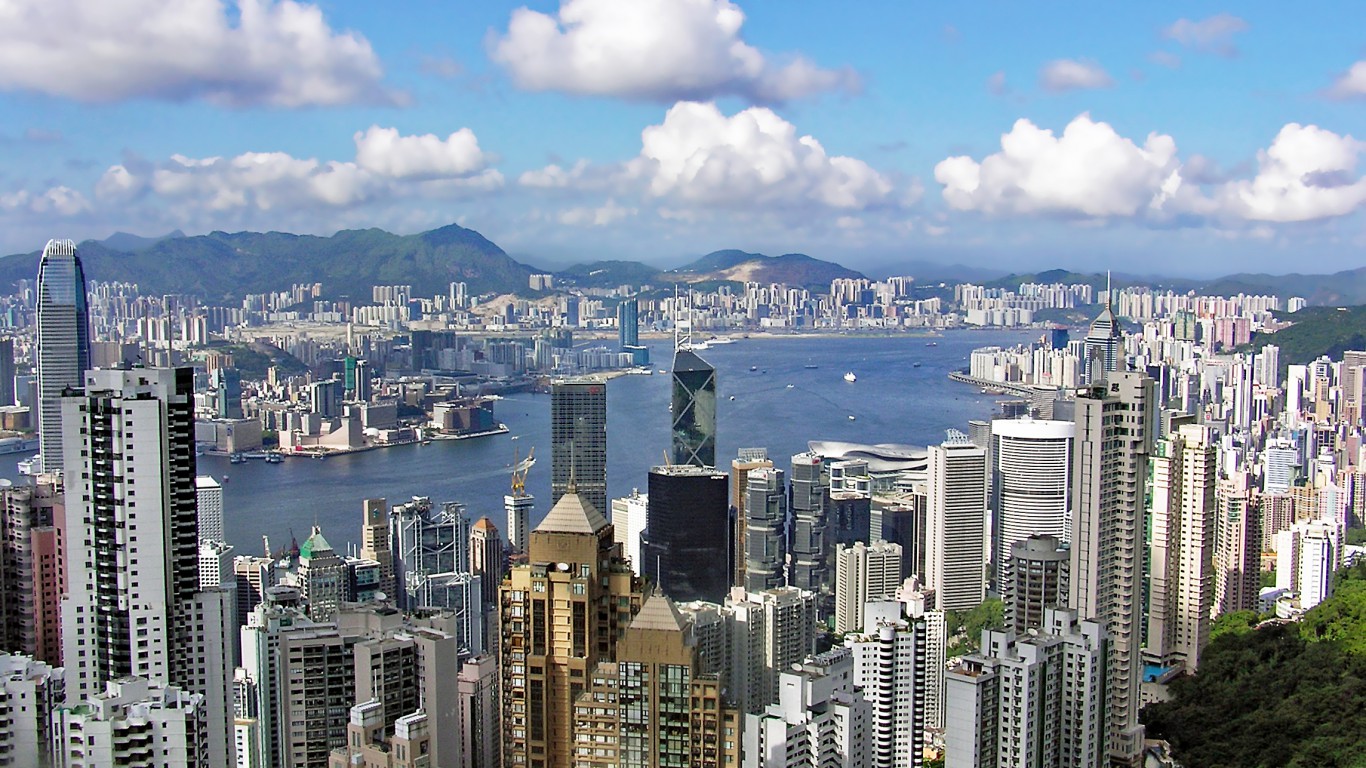
9. Hong Kong SAR, China
> GNI per capita: $55,733
> 2016 GDP: $320.9 billion
> Population: 7.3 million
> Life expectancy: 84.2 years at birth
A major port of entry to southern China, exports play a major role in Hong Kong’s economy. The Port of Hong Kong is the fifth busiest container port in the world by volume, and in 2015 the country exported more than twice the value of its GDP, the most of any nation. China is the destination for 56% of Hong Kong’s total export value. Integrated circuits are Hong Kong’s largest export, accounting for 18% of the total value of outgoing trade from the country. Other major exports include gold, telephones, broadcasting equipment, office machine parts, computers, and diamonds.
Finance is also a major component of the Hong Kong economy. According to British think tank Z/Yen, Hong Kong is the third most competitive financial center in the world, after only London and New York City. Finance and insurance services accounted for approximately 18% of Hong Kong’s GDP in 2016. The country’s GNI per capita of $55,733 is nearly four times the $14,459 global average.
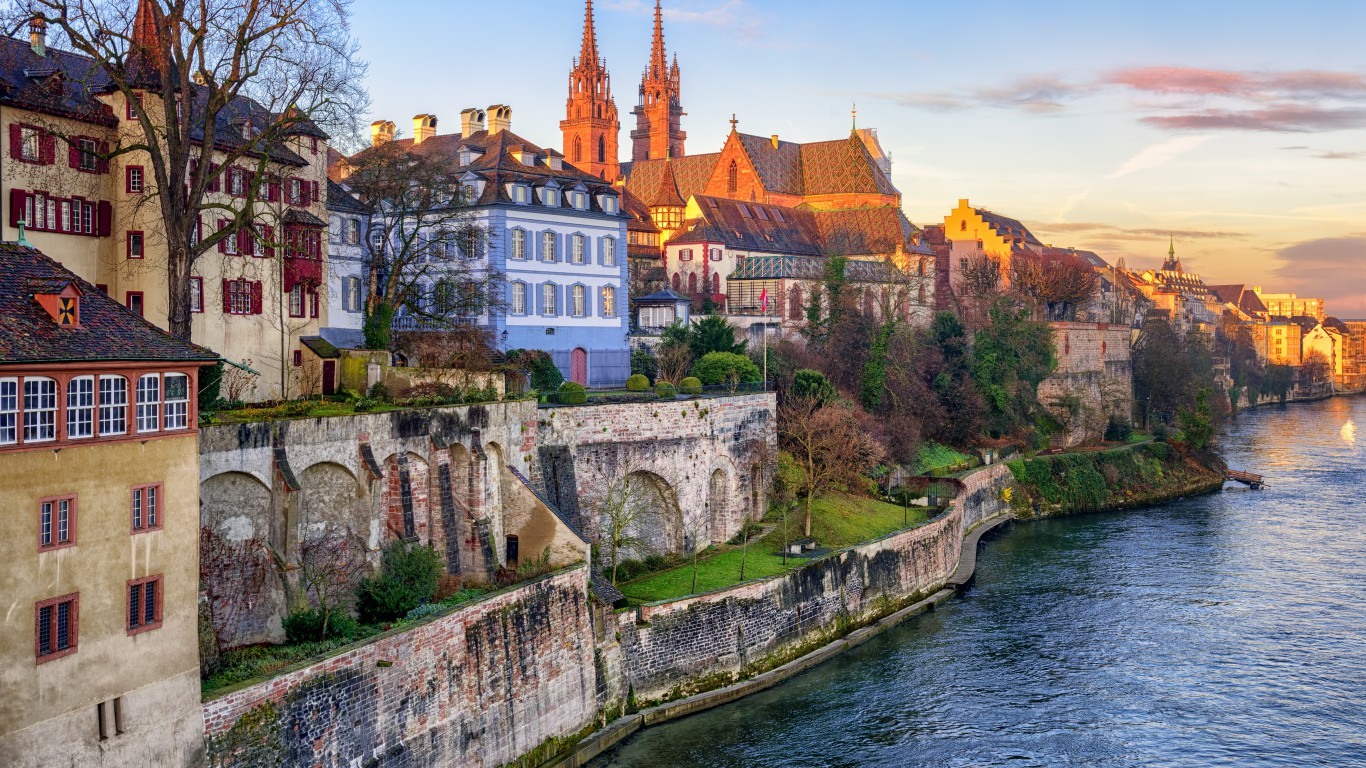
8. Switzerland
> GNI per capita: $57,955
> 2016 GDP: $668.9 billion
> Population: 8.4 million
> Life expectancy: 82.9 years at birth
Known for its international banking industry, Switzerland has one of the wealthiest populations in the world. Though Switzerland’s GNI per capita has contracted somewhat from 2010 to 2016, at $57,955 it remains one of the highest of any country.
Switzerland has one of the fairest and most open governments in the world, according to Transparency International. In the Corruption Perceptions Index, Switzerland scored an 85 out of 100, ranking just behind just New Zealand and Denmark as the least corrupt nation in the world. This fairness and transparency gives all Swiss residents the option to succeed financially, regardless of any government connections.

7. Luxembourg
> GNI per capita: $64,247
> 2016 GDP: $58.6 billion
> Population: 582,014
> Life expectancy: 82.3 years at birth
No country exports more goods and services relative to its GDP than Luxembourg. The tiny European nation between Germany, France, and Belgium exports goods and services worth 221.3% of its GDP. Nations like Luxembourg, in which exports are larger than GDP, often focus on highly profitable industries and use the profits to import what they cannot easily produce. Relying on exports to this extent has become necessary for the small nation of fewer than 600,000 people as its agricultural sector accounts for less than 0.3% of its GDP. Innovative industries including information technology and biomedical research largely drive Luxembourg’s economy.
[in-text-ad-2]

6. Norway
> GNI per capita: $67,034
> 2016 GDP: $371.1 billion
> Population: 5.2 million
> Life expectancy: 82.5 years at birth
Wealth is spread out fairly evenly in Norway, one of the world’s wealthiest countries. With a Gini coefficient of 0.275 as of 2015, the gap between the richest and poorest Norwegians is relatively small. This, in addition to Norway being one of the least corrupt countries in the world, likely contributes to Norway’s strong economy.
The petroleum industry is by far the largest sector of Norway’s economy. Crude petroleum and petroleum gas businesses account for 40.0% of the Scandinavian nation’s total export value. Different types of fish and other seafood also constitute a large share of Norway’s exports.
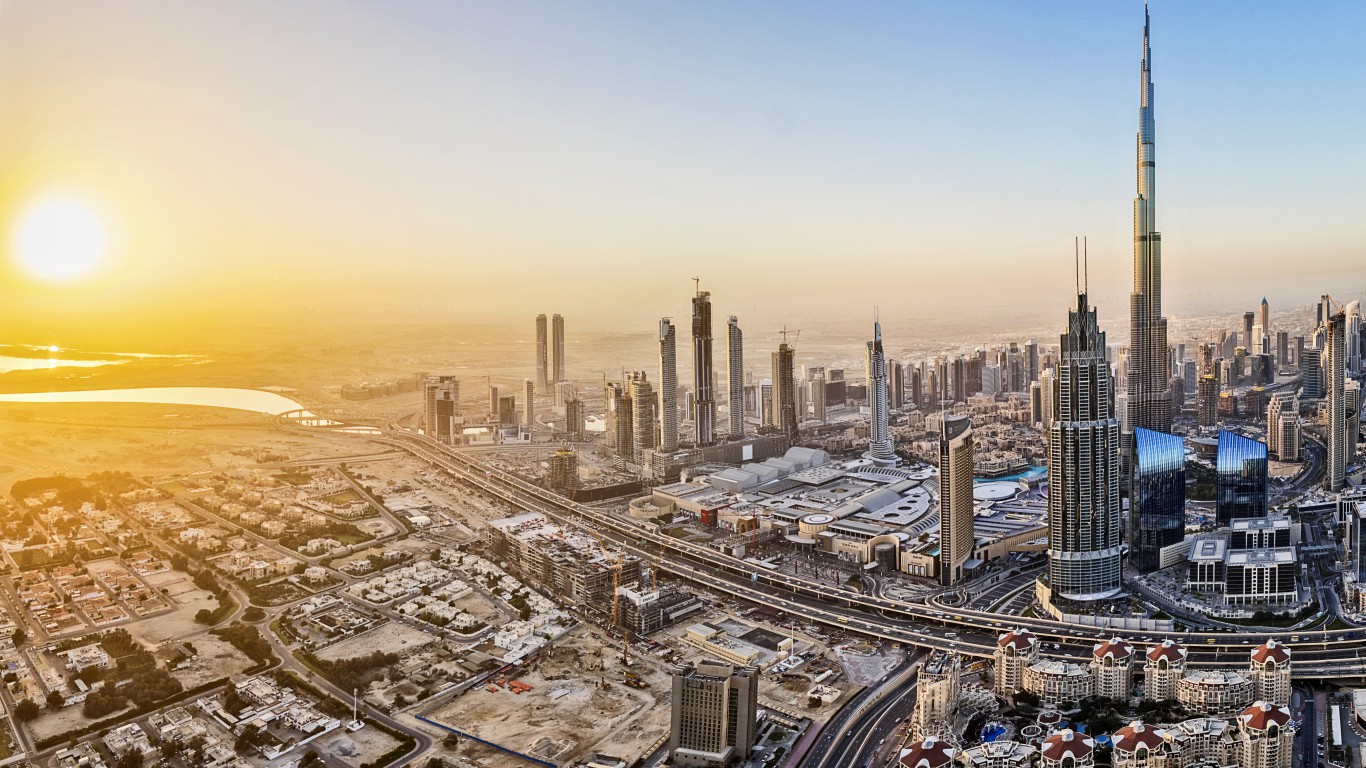
5. United Arab Emirates
> GNI per capita: $67,497
> 2016 GDP: $348.7 billion
> Population: 9.3 million
> Life expectancy: 77.3 years at birth
The United Arab Emirates is one of the richest countries in the world largely due to one factor — oil. The discovery of oil in the Middle Eastern country some 60 years ago has radically changed the UAE from an impoverished country to an economic powerhouse. In 2016, the UAE accounted for 5.5% of crude petroleum trade worldwide.
More developed economies often do not experience quick bursts of growth the way that less wealthy countries do. The UAE’s GNI per capita increased by 17.3% from 2010 to 2016, a quicker rate than almost all of the world’s richest nations.
[in-text-ad]

4. Kuwait
> GNI per capita: $74,109
> 2016 GDP: $110.9 billion
> Population: 4.1 million
> Life expectancy: 74.7 years at birth
No country is more dependent on oil than Kuwait. According to the World Bank, some 44.0% of the country’s GDP comes from oil rents, the largest share in the world. While oil helped Kuwait become one of the world’s wealthiest countries, the sharp decline in oil prices over the past six years has affected Kuwait’s GNI. Per capita GNI fell by 7.5% from 2010 to 2016, one of the steeper declines in the world and the sharpest among the world’s richest countries.
Kuwait faces serious challenges if it wants to stay wealthy, beyond just the price of oil. It is the most corrupt among the world’s richest countries, scoring 39 out of 100 in the Corruption Perceptions Index. The average score is 43, and Kuwait is the only country on this list below that threshold.

3. Brunei Darussalam
> GNI per capita: $76,722
> 2016 GDP: $11.4 billion
> Population: 423,196
> Life expectancy: 77.2 years at birth
Brunei is the smallest country on this list by population with just over 423,000 residents. Yet it is one of the world’s richest because of the large oil and natural gas deposits it controls. With a steady stream of oil income, the Bruneian government charges no personal income tax and provides its citizens free college education. Brunei’s educated, mostly English-speaking population also helps attract significant foreign investment to the country.
Natural gas and crude oil account for some 95% of Brunei’s exports, so the country’s economic well-being is highly dependent on oil prices. Both GNI and GDP per capita have contracted over the last few years, in step with declines in the price of oil.

2. Singapore
> GNI per capita: $78,929
> 2016 GDP: $297.0 billion
> Population: 5.6 million
> Life expectancy: 82.8 years at birth
Even though it has a land area of less than 300 square miles and almost no natural resources, Singapore is one of the most competitive economies in the world. Located at the southern tip of Malaysia along some of Southeast Asia’s most important shipping routes, Singapore is home to the world’s second busiest shipping port.
Singapore’s exports account for a huge portion of its GDP. In 2016, exports accounted for 172.1% of Singapore’s GDP, the third largest share behind Hong Kong and Luxembourg.
[in-text-ad-2]
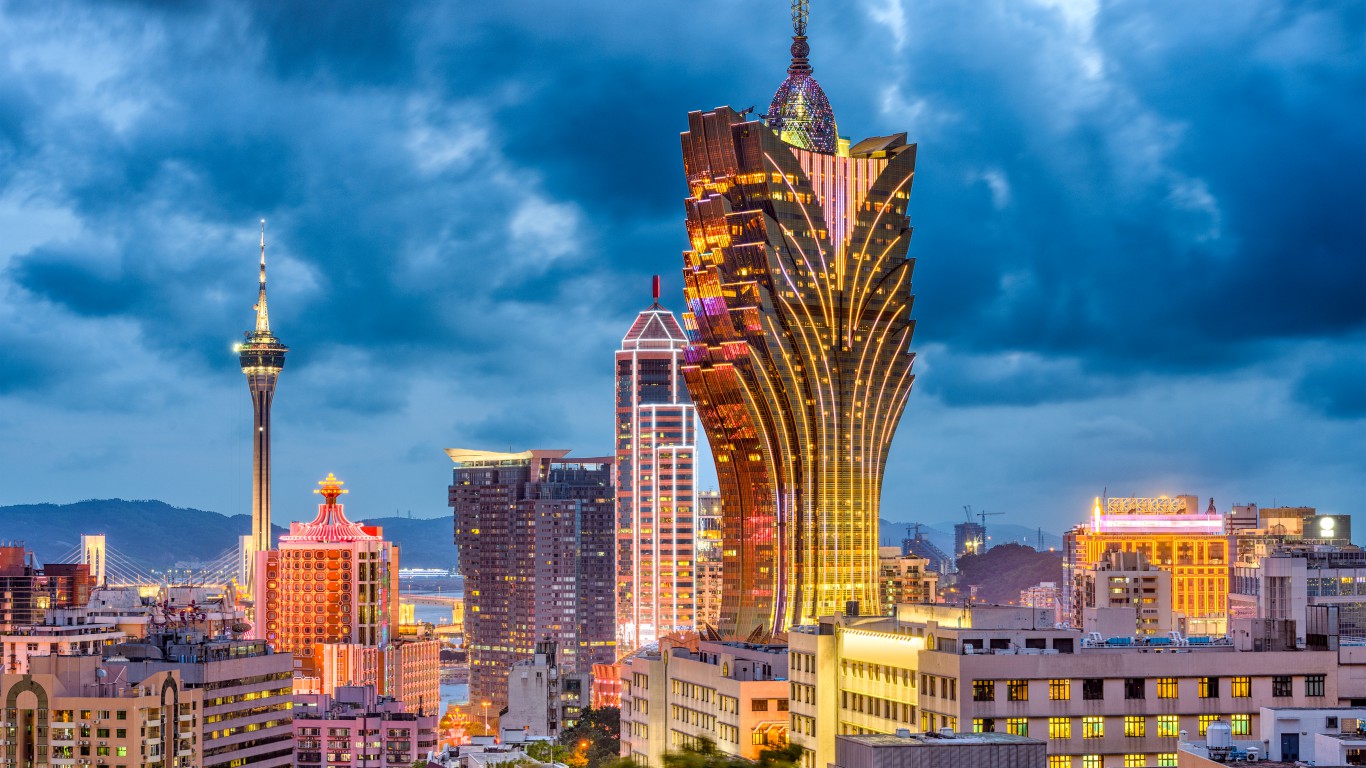
1. Macau
> GNI per capita: $89,524
> 2016 GDP: $45.3 billion
> Population: 612,167
> Life expectancy: 83.8 years at birth
For centuries, Macau was controlled by Portugal. In 1999, it ceded control of the coastal region to China, making it a special administrative region. Shortly after, Macau became one of the largest gambling and gaming destinations in the entire world. The region’s gaming-related taxes accounted for more than three-quarters of the government’s revenue in 2016. This vacation destination has many 5-star hotels and luxurious accommodations, and tourism is a major contributor to the region’s economy. Macau’s GNI per capita is $89,524, by far the highest in the world.
Macau is relatively tiny, with just about 11 square miles of land and 612,000 residents. Macau ‘s life expectancy is one of the highest on Earth, at 83.8 years. Macau’s life expectancy trails that of only Hong Kong and Japan.
Detailed Findings & Methodology
Many of the wealthiest countries are in Western Europe and North America. These highly developed, mixed economies often maintain slight trade surpluses, heavily exporting and importing a variety of value-added products to and from neighboring countries. Many also benefit from a wealth of natural resources, and provide comprehensive social protections to their residents as well as services like education and unemployment insurance.
Some of the world’s wealthiest countries owe the bulk of their wealth to abundant natural resources. In Middle Eastern nations such as Saudi Arabia and Kuwait, petroleum activity accounts for more than a quarter of GDP. Kuwait and UAE, which have the sixth and seventh largest proven oil reserves in the world, respectively, are the fourth and fifth wealthiest countries. In many of the world’s most oil-rich countries, petroleum reserves and factors of production are almost entirely owned by national oil companies, which do not tend to benefit the country’s citizens as much as in countries with less government control of economic activity.
Some countries, lacking natural resources or other major economic advantages, have successfully adopted targeted development plans focusing on strengthening specific aspects of their economies. Macau, for example, legalized gambling in the 19th century and has since developed into a tourism hub for much of Asia.
In the wake of the Great Recession, Ireland loosened its corporate tax laws in order to attract more foreign direct investment. Ireland is now home to some of the world’s largest corporations, and U.S. multinational corporations compose 14 of the country’s 20 largest companies.
Other wealthy countries have been able to leverage a favorable geographic position into a major economic advantage. For example, Belgium — which is located between France, Luxembourg, Germany, the Netherlands, and across the English Channel from the U.K. — adopted relatively loose trade laws in order to capitalize on its proximity to some of Europe’s largest economic powers. Trade is also facilitated by the country’s extensive transportation infrastructure, which consists of the second largest sea port in Europe, a network of roadways connecting to neighboring countries, and one of the densest rail systems in the world. Exports account for 82.9% of Belgium’s total GDP, the 10th largest share of any nation.
Hong Kong also generates a large share of its wealth from trade. Hong Kong is a major port of entry to southern China, and the Port of Hong Kong is the fifth busiest container port in the world by volume. Exports to China alone amount to more than the total value of Hong Kong’s GDP. Relative to their GDPs, the countries that export the most worldwide are Luxembourg, Hong Kong, Singapore, Malta, and Ireland.
Some of the wealthiest countries in the world today only achieved their high standard of living in the last several decades. In what economists term the “Miracle on the Han River,” for example, Singapore went from one of the world’s poorest countries in the middle of the 20th century to the second wealthiest by GNI today. Other countries that experienced substantial growth after World War II include Germany and Japan.
A high standard of living tends to translate to positive health outcomes and longer life expectancy. In all of the 25 wealthiest countries, life expectancy at birth is longer than the average global life expectancy of 72 years. The only countries with a GNI per capita greater than $40,000 and where life expectancy is below 80 years are the United States, Saudi Arabia, UAE, Kuwait, and Brunei.
To identify the richest countries in the world, 24/7 Wall St. reviewed GNI per capita, PPP — tied to constant 2011 international dollars — for 131 countries with data from the World Bank. We ranked the top 25 countries based on GNI per capita and supplemented our analysis with GDP and GDP growth rates, as well as life expectancy, agricultural economic output, internet access, and government school spending from the World Bank. Additional trade data came from MIT’s Observatory of Economic Complexity and are for the most recent year available. Only countries with GNI per capita figures for 2016 were considered. In our analysis, we also included Transparency International’s Corruption Perceptions Index score, which ranks countries based on perceived corruption in the public sector.
Thank you for reading! Have some feedback for us?
Contact the 24/7 Wall St. editorial team.
 24/7 Wall St.
24/7 Wall St. 24/7 Wall St.
24/7 Wall St. 24/7 Wall St.
24/7 Wall St.



